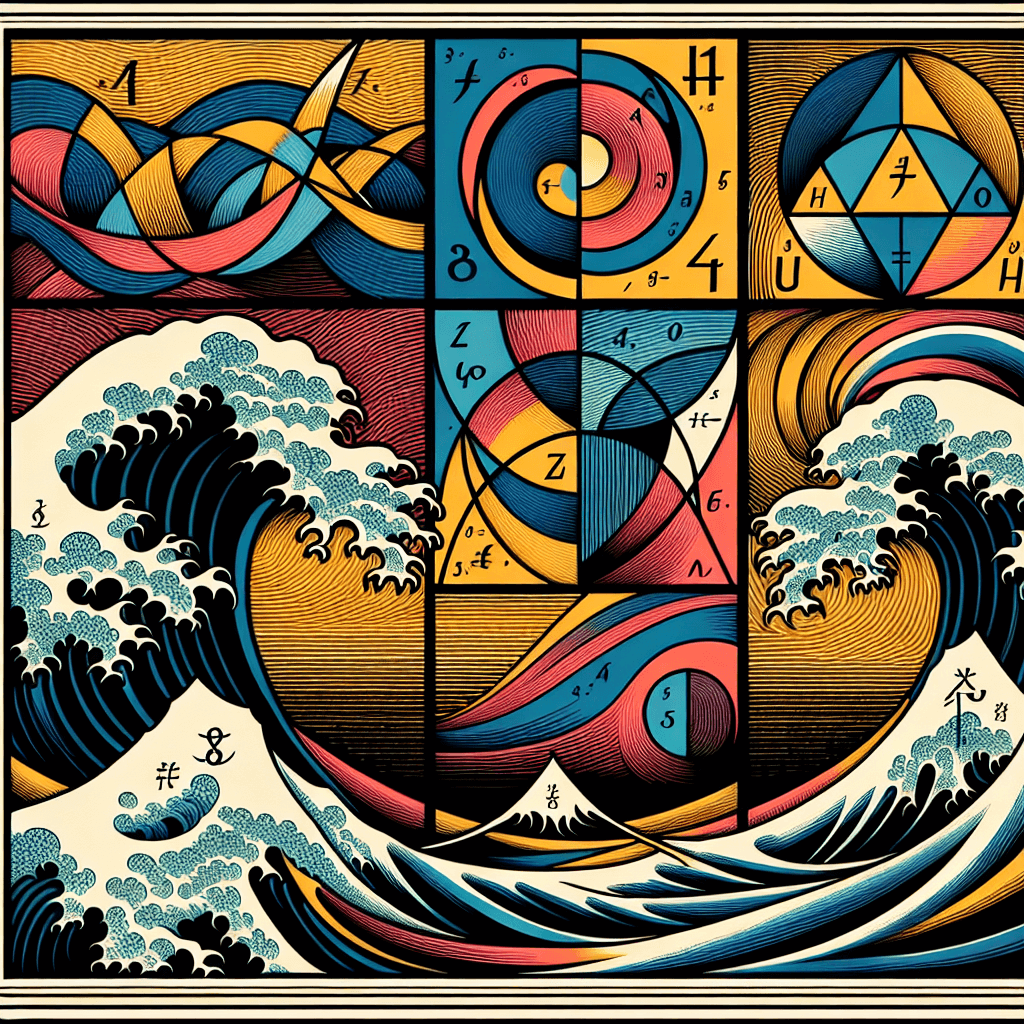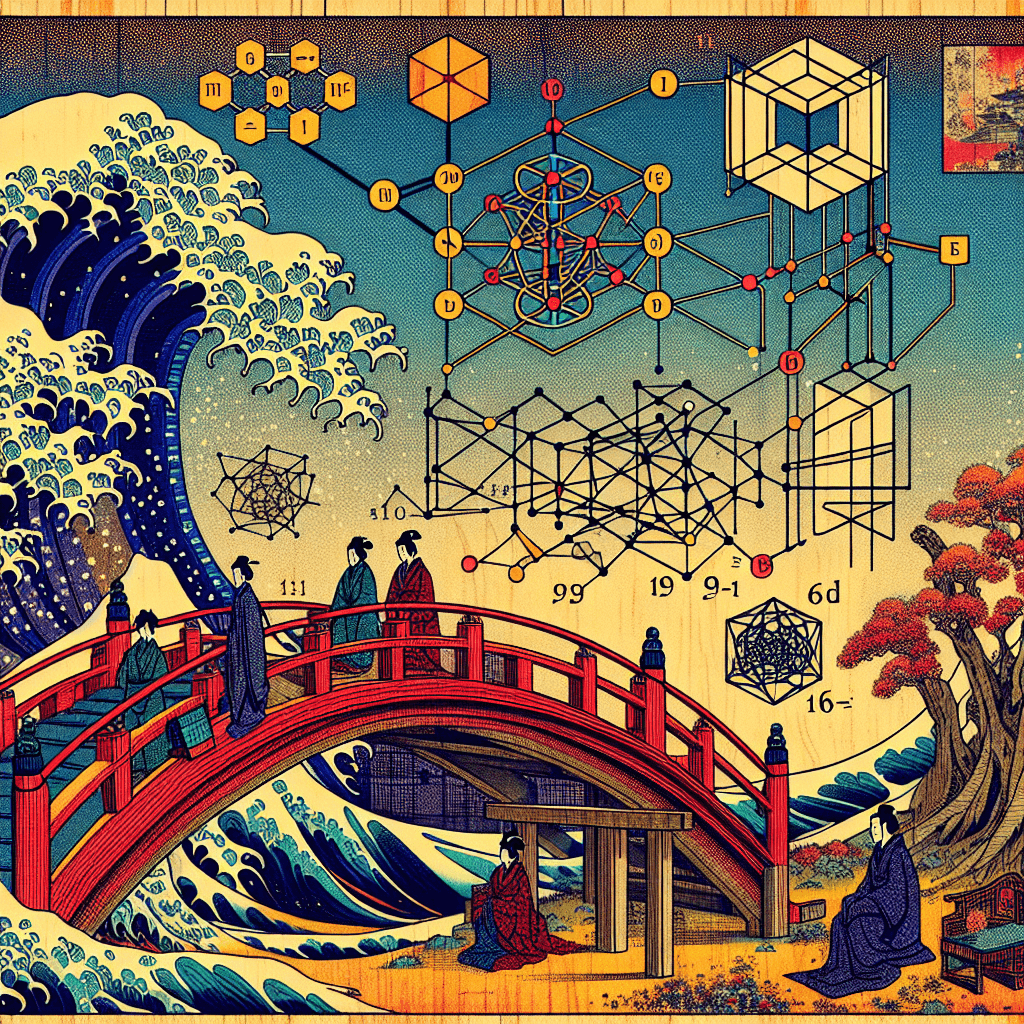The Power of Category Theory and Godai Metaphors
syndu | Sept. 1, 2024, 6:41 a.m.

Conclusion: The Power of Category Theory and Godai Metaphors
Introduction
Category theory, often described as "the mathematics of mathematics", provides a unifying framework for understanding and connecting various mathematical structures. Throughout this blog series, we have explored the fundamental concepts of category theory using the Godai metaphors—Earth, Water, Fire, Air, and Void. These metaphors have helped make abstract ideas more tangible and relatable. In this concluding post, we will summarize the series, highlight the power of category theory, and reflect on the use of Godai metaphors.
Summary of the Series
- Points: Representing Objects in a Category:
- The Origami Airplane: Morphisms and Their Role:
- Composition of Morphisms: Building Complex Structures:
- Functors: Mapping Between Categories:
- Natural Transformations: Connecting Functors:
- Limits and Colimits: Universal Properties in Categories:
- Monoids and Monoidal Categories: Algebraic Structures in Category Theory:
We began by understanding how points can represent objects within a category. Using the metaphor of cities and roads, we visualized how objects (cities) and morphisms (roads) connect within a category.
We explored morphisms, the arrows that describe relationships between objects. The origami airplane metaphor illustrated how each folding step (morphism) transforms the paper (object) from one state to another.
We delved into the composition of morphisms, which allows for building complex structures from simpler components. The Lego metaphor helped us visualize how connecting bricks (morphisms) create intricate structures.
Functors, which map between categories while preserving their structure, were explained using the translator metaphor. This metaphor showed how functors translate objects and morphisms from one category to another.
We examined natural transformations, which connect functors and provide a way to compare them. The bridge metaphor illustrated how natural transformations create pathways between functors.
Limits and colimits, which generalize various mathematical constructions, were explored using the puzzle metaphor. This metaphor demonstrated how limits (completed puzzle) and colimits (blueprint) represent universal properties.
We investigated monoids and monoidal categories, which provide a framework for understanding algebraic structures. The assembly line metaphor helped us visualize how monoids and monoidal categories organize and process objects and morphisms.
The Power of Category Theory
Category theory's power lies in its ability to provide a unifying language for mathematics. It allows us to see connections between different mathematical structures and offers a framework for understanding complex relationships. By abstracting and generalizing concepts, category theory enables us to apply mathematical ideas across various fields, from algebra and topology to computer science and logic.
Reflecting on Godai Metaphors
The use of Godai metaphors—Earth, Water, Fire, Air, and Void—has been instrumental in making abstract concepts of category theory more accessible and engaging. Each metaphor provided a unique perspective, helping us visualize and understand the intricate relationships within categories.
- Earth (Points): Representing stability and foundation, Earth helped us understand the basic building blocks of categories.
- Water (Morphisms): Symbolizing flow and transformation, Water illustrated how morphisms connect and transform objects.
- Fire (Composition): Representing energy and change, Fire showed how the composition of morphisms builds complex structures.
- Air (Functors): Symbolizing movement and connection, Air helped us visualize how functors map between categories.
- Void (Natural Transformations): Representing the unseen and the potential, Void illustrated the abstract nature of natural transformations.
Visual Aids to Encapsulate the Series
To encapsulate the series, we have created visual aids that summarize the key concepts and metaphors:
- Diagram of Cities and Roads: Representing objects and morphisms.
- Origami Folding Sequence: Illustrating morphisms and their composition.
- Lego Building Sequence: Visualizing the composition of morphisms.
- Translator Mapping: Showing how functors map between categories.
- Bridge of Natural Transformations: Connecting functors.
- Puzzle Metaphor: Representing limits and colimits.
- Assembly Line: Visualizing monoids and monoidal categories.







Conclusion
“The journey through category theory using Godai metaphors has been enlightening and engaging.”
By leveraging these metaphors, we have made abstract concepts more tangible and relatable. Category theory's power lies in its ability to unify and connect various mathematical structures, providing a framework for understanding complex relationships. As we continue to explore the depths of mathematics, the insights gained from category theory and the Godai metaphors will serve as valuable guides.
Next Steps
To continue your exploration of category theory, consider delving into more advanced topics such as higher-order categories, functorial semantics, and the applications of category theory in computer science and logic. The journey through category theory is vast and filled with opportunities for discovery and understanding.
Action Items:
- Research and Understand Advanced Topics: Explore higher-order categories, functorial semantics, and applications in computer science.
- Draft Blog Posts: Write detailed and engaging content on advanced topics.
- Create Visual Aids: Develop visual aids to illustrate advanced concepts.
- Generate Captivating Titles: Create informative and intriguing titles for new blog posts.
- Review and Edit: Proofread and edit for clarity and correctness.
- Publish and Promote: Publish the blog posts and promote them to reach the target audience.
Goal: To continue creating comprehensive and engaging content that attracts and inspires readers, encouraging them to explore the depths of category theory through relatable and visual metaphors.
Promotion Plan
Social Media: Share the blog post on platforms like Twitter, LinkedIn, and Facebook with engaging captions and relevant hashtags.
Newsletters: Include the blog post in the next edition of our newsletter to reach our subscribers.
Online Communities: Post the blog link in relevant forums and communities such as Reddit, Stack Exchange, and specialized category theory groups.
Collaborations: Reach out to influencers and experts in the field to share the blog post with their audience.
SEO Optimization: Ensure the blog post is optimized for search engines to attract organic traffic.
By following this plan, we aim to maximize the reach and impact of our blog post, engaging a wide audience interested in category theory and its applications.









